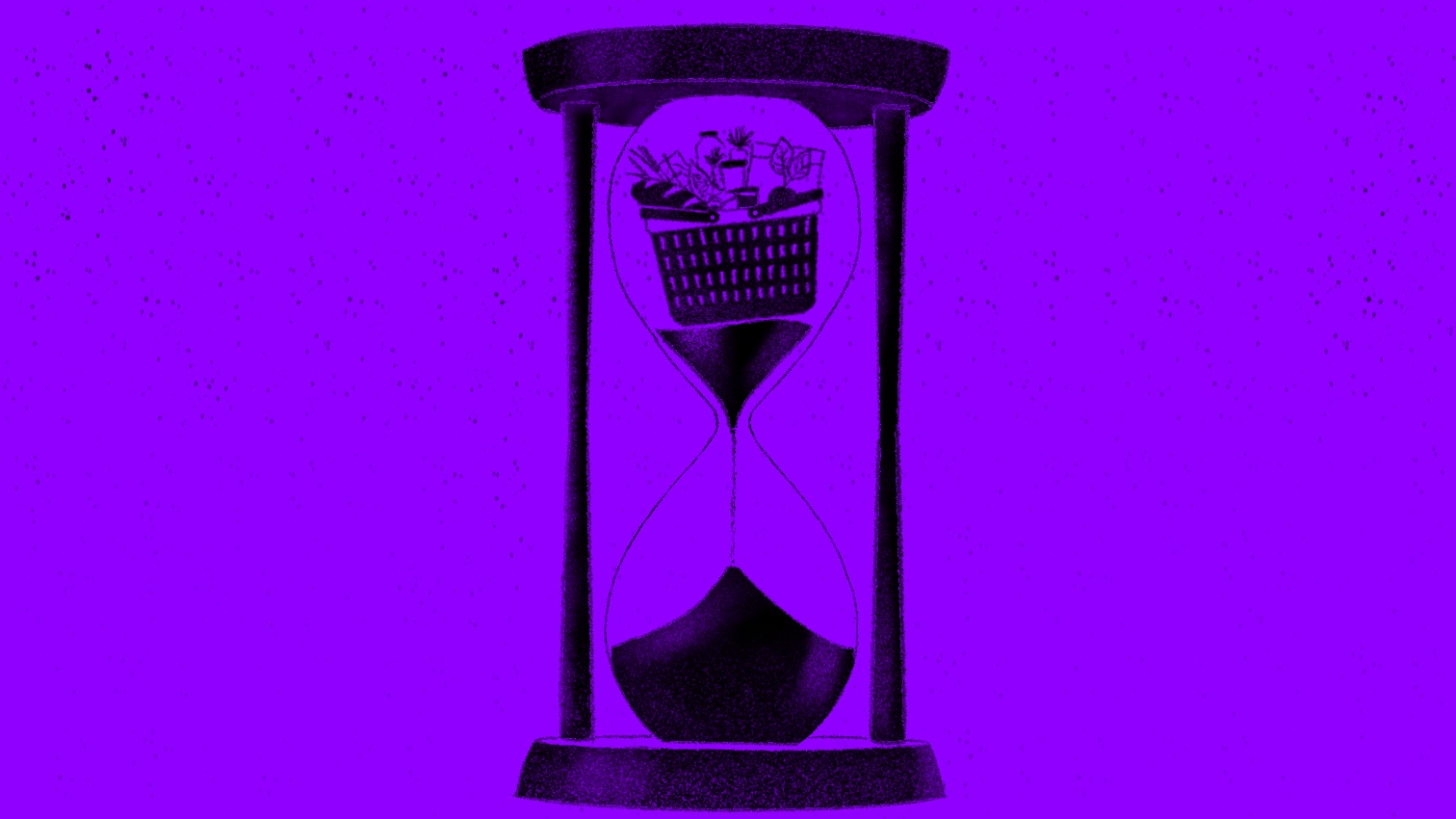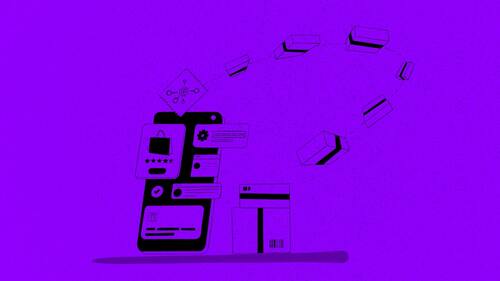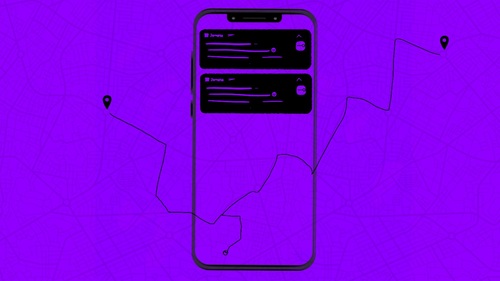It's so painful to find out that you're out of salt, sugar or some random masala (spice) when your cook is about to start preparing food. You either muster some courage to go downstairs quickly and get the items, or make-do with whatever food gets prepared.
But this pain suddenly vanished in 2021 when super fast delivery became a norm. I can now order groceries and they will be at my doorstep within 10 minutes. Every single time.
To top it all, I get free delivery and some great discounts occasionally.
Goodbye grocery shopping lists!
These 10-minute delivery startups clearly offer great convenience to customers, with no trade-off that I can imagine for now.
But how's all of this even possible? And will we keep getting this convenience at no extra cost, forever?
Well, let's find out.
Firstly, what's happening with 10-min delivery startups?
To sum it up in a few words — it's raining money!
10-minute grocery delivery startups became VC-darlings in 2021.
Just look at the amount of money poured into these startups:
- Zepto raised $60 million in just 7 months after launch, and then raised another $100 million in the next 45 days.
- Swiggy decided to pour in $700 million into its quick commerce platform, Instamart.
- Reliance poured in ~$220 million into Dunzo, and got a 25% stake.
- BlinkIt (earlier Grofers) raised $100 million from Zomato, and Zomato is now planning to acquire BlinkIt for $700-800 million.
So you see all big brands fighting to get a piece of the pie.
Of course, since all of them are now promising quick delivery at no extra cost, even others who want to get into this space or are already present, have to match this.
Ola had to launch their quick delivery arm, Ola Dash, with the same promise of delivery within 10 minutes. While Flipkart Quick recently reduced their delivery time from 90 to 45 minutes.
Clearly, the baseline for grocery delivery time has been revised to 10 minutes. At least for now. So even if you don't want to, you still have to do it, just to stay at par with your competition.
Making sense of why Zomato is buying BlinkIt for almost a billion dollars
Competition is making these startups do things they otherwise possibly won't. For instance, as we saw, 10 minutes to deliver groceries has become the norm. Similarly, you have to offer free delivery & discounts if you have to stay in the race.
But Zomato has gone even a step further, and is ready to pay up almost a billion dollars to bail out a bleeding company — BlinkIt. Why you ask? To not let Swiggy get a competitive edge.
Let's break this down further, and look at the timeline.
- Swiggy was quick to catch on to the fast grocery delivery trend, and built Instamart from scratch. They launched Instamart in 2020, and Zomato had nothing to compete even in 2021.
- By 2021, Grofers (now BlinkIt) had already raised ~$650 million dollars over 10+ funding rounds, but was yet to find the right area to focus on.
To understand this better, let's quickly look at the journey of Grofers:- Grofers started out as a B2B inventory tracking tool for kirana shops (local grocery shops) in 2013. They were already processing orders worth ~$450K per month by 2015 through this model.
- In 2015, they realised that there was potentially a larger opportunity if they opened up the platform for end consumers. So they pivoted to delivering groceries and picked up ~$150 million in funding the same year.
- Now, Grofers worked on a marketplace model where they acted as intermediaries picking up items from a local grocery store and delivering it to the customer. Grofers biggest competitor, BigBasket, instead opted for the inventory model.
- By 2017, Grofers realised that the marketplace model was flawed with low margins and heavy cash burn compared to the inventory model. In fact, they had expanded to 25+ cities by then, and had to scale down & lay off people. So they now pivoted to an inventory model.
- Finally, the inventory model was seeming to be a success (scalable), but in 2020-21, Zepto & Instamart made quick delivery of groceries the baseline. So Grofers had to pivot again to account for quick delivery.
All this while of course, Grofers was burning all of the VC cash making heavy losses. - Grofers need to pivot to 10-min delivery made it the right target for Zomato. Zomato poured in $100 million into Grofers immediately in July 2021 and planned to put in more money in the coming months/years.
- Zomato was always eyeing to buy BlinkIt but its public debut i.e. IPO delayed things a little.
- Finally, in mid-March, Zomato went all in to announce buying out BlinkIt (eventually).
In fact, part of the reason why Zomato hurried up to buy out BlinkIt is because BlinkIt was possibly looking for funding externally.
Hmm, but what are these companies trying to achieve eventually?
You're thinking right. It doesn't make sense to blindly keep pouring money where your competitors are. After all, your competitors could be totally wrong.
To argue further,
- The average spend by quick commerce startups on delivery for every order is INR 150-200.
- Given quick commerce is relatively new, free delivery is still the norm.
- Additionally, all these startups have to offer attractive discounts to stay competitive.
Clearly, there seems to be no inflow of cash into the business, and many areas where they need to spend on. So what's the endgame these startups are looking at?
Well, the biggest argument for quick grocery delivery is that it will bring in a long-term behavourial change in consumers, which can hopefully never be reversed.
Let me explain with an example.
10 years back, getting food delivered at home or elsewhere was a lot of hassle. You had to call up the restaurant, and hope they are ready and have someone free to deliver the food to you.
But now, online food ordering and delivery is the norm. In fact, you'll see Twitter flooded with messages if Zomato or Swiggy are experiencing problems even for a few minutes.
These companies made online food ordering a habit for you. And now, you can't do away with it.
Similarly, quick commerce startups are hoping that getting groceries delivered within 10 minutes becomes an irreversible habit. Something you can't do away with.
Once that happens, these grocery delivery startups can then charge delivery fees and also mark up the prices of groceries. All for the convenience of getting groceries delivered quickly.
In fact, BlinkIt is already experimenting with "surge pricing" for grocery delivery where you have to pay extra in times of peak hours i.e. when everyone else also wants to order.
Got it, but is there anything wrong with this logic?
There are a few BIG assumptions this entire logic rests on:
1) People would be willing to pay extra for the convenience of getting groceries delivered right away. Not even the same day or within the same hour, but within 10 minutes.
Think about this — when you order groceries, how many times do you need the items right away? In fact, most times, you'd be happy waiting even an entire day to stock up your weekly or monthly groceries.
2) More importantly, making money depends on having a higher-order value. Let me explain why.
There are 2 ways these startups can make money: a) delivery fees b) commission on top of ordered items.
For both a & b, your willingness to pay extra heavily depends on the total amount you're paying for the order. For instance, you'd surely not agree to pay up a delivery charge of INR 50 or 100 if your order total itself is say, INR 100.
For now, at least, these quick delivery startups have a low order value compared to their food delivery counterparts like Zomato & Swiggy. However, Zomato has seen a spike in order value from ~INR 250 in 2019 to ~INR 400 in 2020. So maybe even the quick delivery startups are hoping to get a similar spike at some point.
Now for a second, let's assume that these startups are able to get past both of the above problems. Yet they will always fear losing customers to their competitors.
For instance, if Blinkit decides to charge delivery fees for every single order or stop giving discounts, Instamart may still continue to offer free delivery from the $700 million they are pouring into the business.
Plus, the competition in this space is crazy. Check this — Udaan started its own quick delivery offering, Pickily, and peaked to 200,000 daily users in December 2021. But the numbers have dropped to 50,000 since then!
Overall, it's surely an uphill battle for quick delivery startups to survive and eventually make money. For now though, enjoy the luxury of getting your groceries delivered at the blink of an eye 😉







